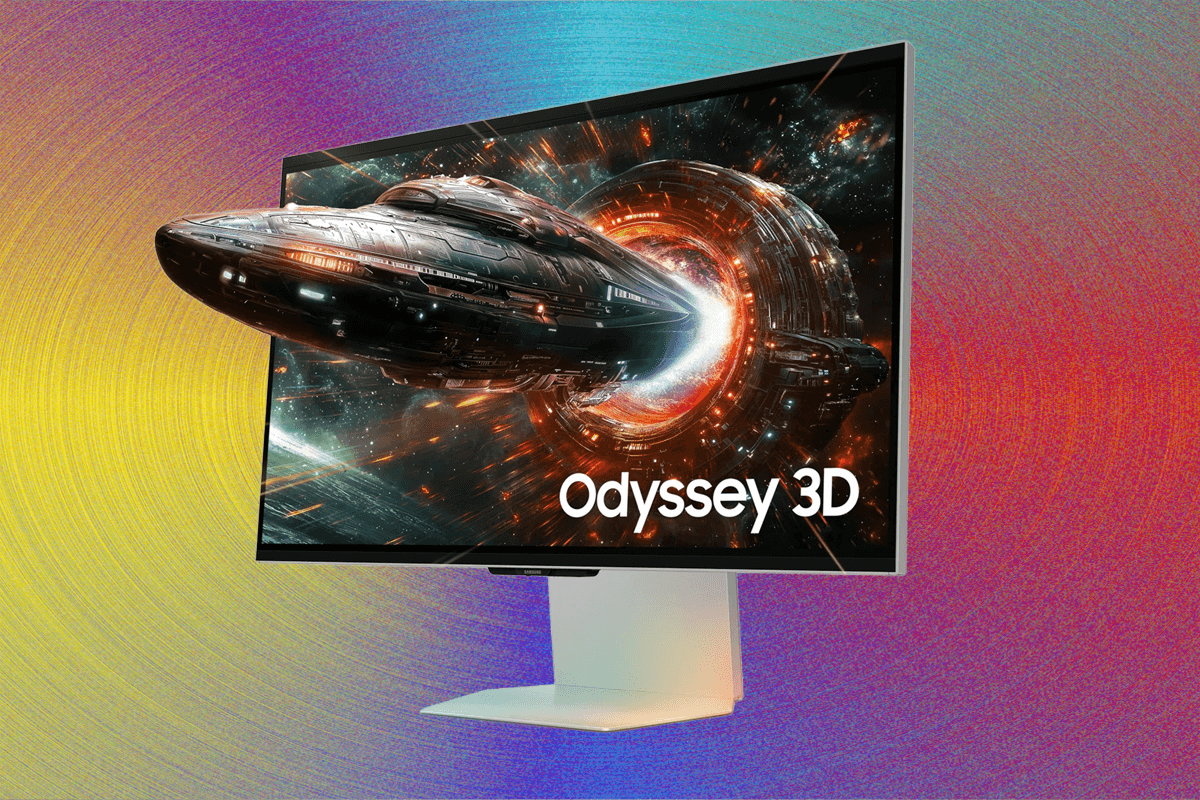After 15 Years, WhatsApp Arrives on the iPad
For over a decade, a common request echoed among iPad users: a dedicated WhatsApp application. Despite the widespread popularity of both the messaging service and Apple’s tablet, a native experience remained elusive. Users relied on workarounds, navigating the service through web browsers or linking their accounts to desktop applications. Now, after a wait spanning fifteen years since the advent of WhatsApp and the iPad itself, the dedicated iPad app is finally a reality.
This long-anticipated release brings the full functionality of WhatsApp directly to the larger screen, integrating seamlessly with the iPadOS environment. This marks a significant step, finally acknowledging the tablet as a primary device for communication, not just a secondary screen.

WhatsApp for iPad is available now on the App Store.
A Long-Awaited Arrival
The journey for a native WhatsApp app on the iPad has been extensive. WhatsApp first launched in 2009, followed closely by the introduction of the iPad in 2010. For years, users hoping to access their chats on their tablets were met with limitations. The mobile app designed for iPhones simply wasn’t optimized or available for installation on iPads running iPadOS. This forced a reliance on less integrated methods, a point of frustration for many who considered their iPad a central hub for both work and personal life.
The development wasn’t entirely without acknowledgment from the company behind WhatsApp. In previous statements, the desire to create a dedicated iPad experience was mentioned, indicating that the user demand was heard. However, translating that desire into a finished product took considerable time, leading to speculation within the tech community about the technical hurdles or strategic priorities that caused the delay. Regardless of the reasons for the extended wait, the arrival of the official app is a welcome development, finally closing a long-standing gap in the platform’s availability.
The debut of the app was subtly teased by the official WhatsApp social media channels just days before its launch, generating immediate excitement among users who had been patiently waiting for years. This low-key hint quickly spread, culminating in the app’s direct availability on the App Store, bypassing a prolonged beta period or staged rollout, and putting the native experience directly into users’ hands.
Features and Functionality on the Big Screen
The native WhatsApp app for iPad brings a comprehensive set of features familiar to users of the iPhone version, but optimized for the tablet’s larger display and capabilities. This is not merely a scaled-up phone app but a version built to take advantage of iPadOS.
Key features available in the iPad app include:
- Messaging: Send and receive text messages, photos, videos, documents, and voice notes with individual contacts and groups. The messaging interface is designed to utilize the wider screen, often displaying chat lists and conversations side-by-side in landscape mode, providing a more desktop-like experience.
- Voice and Video Calls: Initiate and join audio and video calls directly from the iPad. The app supports calls with multiple participants, allowing up to 32 people to join a group call. This feature is particularly impactful on an iPad, leveraging the device’s screen size for clearer video feeds and a more engaging group communication experience.
- Camera Support: Utilize both the front and rear cameras of the iPad for video calls and sending media. This allows for flexibility, whether you’re participating in a video conference using the front-facing camera or sharing your surroundings using the rear camera.
- Screen Sharing: During video calls, users can share their iPad screen with other participants. This is invaluable for collaboration, presentations, or simply walking someone through something on your tablet, making the iPad app a powerful tool for both personal and professional communication.
- Media Sharing: Easily share photos and videos from your iPad’s photo library, take new pictures or record videos within the app, and share documents and other files stored on your device.
The integration of these core features into a native iPad app eliminates the compromises previously associated with using workarounds. Messaging feels fluid and responsive, calls leverage the iPad’s hardware effectively, and the overall experience is far more cohesive than relying on web browsers.
Enhanced Multitasking with iPadOS
One of the most significant advantages of a native iPad application is its ability to integrate deeply with the operating system’s features. The WhatsApp app for iPad takes full advantage of iPadOS multitasking capabilities, fundamentally changing how users can interact with their messages while using other applications.
The app supports key iPadOS multitasking features, including:
- Split View: Run WhatsApp side-by-side with another app. This allows you to have a conversation open on one half of the screen while browsing the web, checking email, working on a document, or watching a video on the other half. You can adjust the size of each app window to prioritize your current task.
- Slide Over: Keep WhatsApp in a smaller, floating panel on the side of the screen that can be quickly swiped in and out. This is perfect for quickly responding to messages without fully interrupting the primary app you are using. Tap the handle at the top of the Slide Over window to move it to the other side of the screen or temporarily dismiss it.
- Stage Manager: On supported iPad models, Stage Manager allows users to work with multiple app windows that can be resized and organized in overlapping layouts. WhatsApp works within this environment, allowing it to be part of complex multitasking workflows alongside other applications, making it easier to manage several tasks simultaneously.
Prior to this native app, using WhatsApp while doing something else on an iPad meant constantly switching between the browser tab running WhatsApp Web and your other applications. This was cumbersome and inefficient, disrupting workflow. The integration with Split View and Slide Over transforms the iPad into a much more capable device for staying connected while being productive or entertained. You can now effortlessly reply to a message without leaving your current app, monitor group chats while researching, or have a video call active alongside shared documents or websites. This level of multitasking convenience significantly enhances the utility of WhatsApp on the iPad.
The Experience Before: Workarounds and Limitations
Before the launch of the dedicated app, iPad users wanting to access WhatsApp faced limitations that often felt like a compromise compared to the seamless experience on smartphones or desktop computers. The primary methods available were WhatsApp Web or the desktop applications for Mac or PC, accessed either through the iPad’s browser or by linking the account to a computer.
Using WhatsApp Web on the iPad’s browser was the most common workaround. This involved navigating to the WhatsApp Web URL in Safari or another browser and scanning a QR code displayed on the iPad screen using the WhatsApp app on your iPhone. While it allowed access to chats, the experience was far from ideal:
- User Interface: The web interface was designed for desktop browsers, not touch-based tablets. It often felt cramped or poorly scaled on the iPad screen.
- Notifications: Web notifications were often unreliable or delayed compared to native push notifications.
- Multitasking: As mentioned, using WhatsApp Web required keeping a browser tab open. Switching between the browser and other apps was disruptive. Slide Over and Split View integration was non-existent for the web version.
- Calls: Voice and video calls were not possible through WhatsApp Web on the iPad browser.
- Media Handling: Uploading and downloading media could sometimes be clunky.
- Reliance on Phone: WhatsApp Web required your iPhone to be online and connected, acting as the primary server for the web session. If the phone lost connection, WhatsApp Web would stop working.
The other option involved using the WhatsApp Desktop application on a Mac or PC and linking the iPad as a secondary device through WhatsApp’s multi-device feature. While multi-device allows linking up to four companion devices without keeping the phone online, it still meant accessing WhatsApp on a separate computer, not natively on the iPad itself. This wasn’t a solution for using WhatsApp directly on the tablet.
The introduction of the native iPad app eliminates these workarounds and their associated frustrations. It provides an independent, optimized, and deeply integrated experience that finally treats the iPad as a first-class device for using the world’s most popular messaging platform.
How the Native App Leverages Multi-Device
The arrival of the iPad app is made possible and works seamlessly thanks to WhatsApp’s multi-device capability. This feature, rolled out previously, allows users to link secondary devices like desktop computers or now, iPads, to their primary WhatsApp account without requiring the main phone to be continuously online.
Here’s how it generally works and benefits the iPad app:
- When you install WhatsApp on your iPad, you’ll be prompted to link it to your existing WhatsApp account, which is tied to your phone number on your primary device (usually an iPhone or Android phone).
- This linking process typically involves scanning a QR code displayed on the iPad screen using the WhatsApp app on your primary phone.
- Once linked, the iPad becomes a “companion device.” It connects directly to WhatsApp’s servers, receiving and sending messages independently of whether your primary phone is online.
- Your message history is securely synced to the iPad, although the initial sync might take some time depending on the volume of your chats. New messages arrive on both your phone and iPad (and any other linked devices) almost simultaneously.
- Security remains paramount. Messages and calls are end-to-end encrypted, ensuring that only you and the recipient can read or listen to them, even when using linked devices.
The multi-device architecture is crucial for the iPad app because it allows for a truly native, always-on experience on the tablet. You don’t need to worry about your phone’s battery or internet connection status to send messages or make calls from your iPad. This enhances the reliability and convenience of using WhatsApp on the tablet throughout the day, whether you’re at home, at work, or on the go (if your iPad has cellular connectivity).
Impact and User Experience
The availability of WhatsApp on the iPad has a significant impact on the user experience, particularly for those who frequently use their tablets for communication, productivity, or media consumption.
Consider the following scenarios:
- Work and Productivity: Users who rely on their iPad for work tasks like writing, researching, or managing projects can now seamlessly integrate their communication. Responding to colleagues, sharing files, or participating in group discussions via WhatsApp can happen in Split View alongside project documents or spreadsheets, without the need to constantly pick up a phone. The screen sharing feature during calls makes remote collaboration more effective directly from the tablet.
- Personal Communication: Keeping up with family and friends becomes easier. You can chat on the big screen while browsing social media, watching videos, or playing games. Group video calls with loved ones can be enjoyed on a larger display, offering a more immersive experience than on a phone.
- Media Consumption: If you’re using your iPad to watch a movie or read a book, you can keep a WhatsApp Slide Over panel ready to quickly check and reply to incoming messages without pausing your media or losing your place.
- Hands-Free Use: With the iPad often placed on a stand or desk, the native app facilitates hands-free communication, making video calls more comfortable and accessible.
The native app also generally offers a more polished and responsive interface compared to the web version. Scrolling through chats is smoother, media loads faster, and interactions feel more natural within the touch-based iPadOS environment. Push notifications work reliably, ensuring users are promptly alerted to new messages and calls even when the app is running in the background or the iPad is locked.
For users who primarily use their iPad at home or in a fixed location, the native app provides a convenient alternative or supplement to their phone, allowing them to leave their smartphone aside while remaining fully connected on their tablet. For those who use their iPad on the go, the app provides the same seamless messaging experience they expect from the platform, utilizing the tablet’s larger screen for easier typing and viewing.
The Future of Meta Apps on iPad
The launch of the WhatsApp app for iPad fuels speculation about the potential for other Meta-owned applications to receive similar native treatments. Instagram, another hugely popular platform owned by Meta, has also notably lacked a dedicated iPad application optimized for the tablet’s display. Users have long relied on using the iPhone version scaled up or accessing the platform through the web browser, neither of which provides an ideal experience.
The successful development and release of the WhatsApp iPad app could indicate a renewed focus within Meta on bringing their core services to the iPad platform with native experiences. While there have been rumors regarding an Instagram app optimized for the larger iPad display, no official confirmation or timeline has been provided. The approach taken with WhatsApp – building a full-featured app that leverages iPadOS multitasking – sets a precedent and raises expectations for how other Meta apps might function if they were to arrive on the tablet.
Bringing Instagram to the iPad with a native app that supports multitasking, high-resolution media display, and potentially features optimized for the larger screen could significantly enhance the user experience for creators and consumers alike. Imagine browsing feeds, editing photos, or watching Reels in Split View or Stage Manager, similar to how WhatsApp can now be used alongside other applications.
The arrival of WhatsApp on the iPad, after such a long wait, serves as a significant milestone. It not only provides a much-needed native experience for millions of users but also suggests a potential shift in strategy towards embracing the iPad as a valid and important platform for Meta’s family of apps. While the future for other apps like Instagram on the iPad remains to be seen, the WhatsApp release offers a promising glimpse of what’s possible when these powerful platforms are fully integrated with the capabilities of Apple’s tablet.
Conclusion
The wait is over. After fifteen years, WhatsApp has finally delivered a dedicated application for the iPad. This release is more than just another app launch; it’s the fulfillment of a long-standing user request and the culmination of bringing a globally dominant messaging platform to a widely used device that was previously underserved.
The new app offers a comprehensive set of features, from standard messaging to robust voice and video calling with screen sharing, bringing the full power of WhatsApp to the tablet. Crucially, its integration with iPadOS multitasking features like Split View, Slide Over, and Stage Manager transforms the iPad into a much more effective communication hub, allowing users to chat seamlessly alongside their other activities. This native experience replaces cumbersome web browser workarounds, providing a smoother, more reliable, and better-integrated way to stay connected.
Powered by WhatsApp’s multi-device architecture, the iPad app functions independently of the user’s primary phone, offering persistent connectivity and convenience. This significantly enhances the utility of WhatsApp for both personal use and productivity on the larger screen.
While this release specifically addresses the demand for WhatsApp, its arrival after such a considerable delay also raises hopeful possibilities for the future of other popular platforms, particularly within the Meta ecosystem, on the iPad. For now, iPad users can finally download the official WhatsApp app from the App Store and enjoy a native, full-featured messaging experience that was fifteen years in the making.








Comments